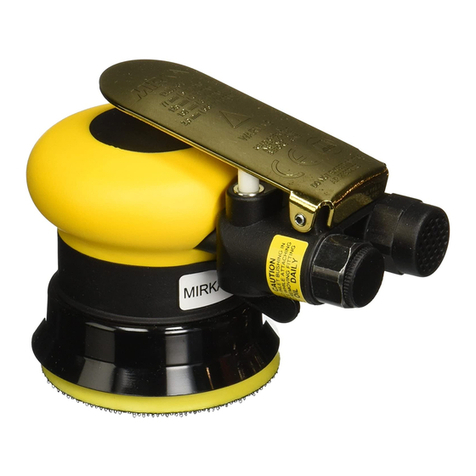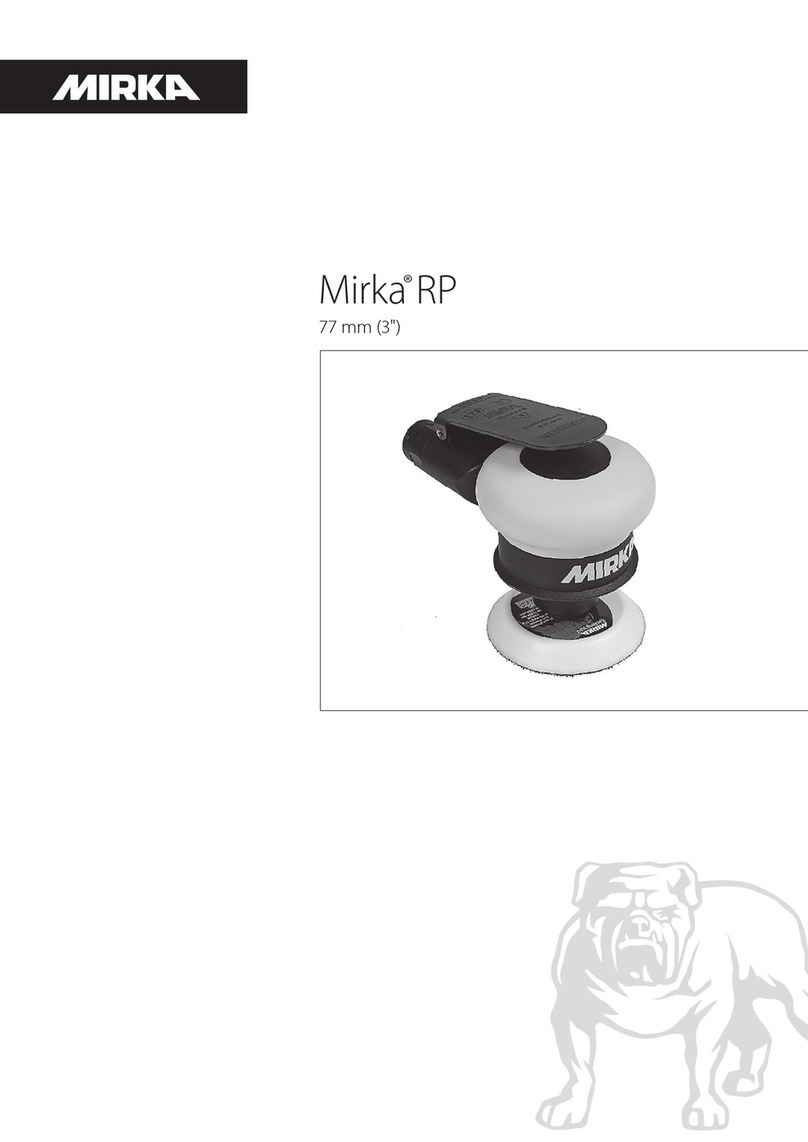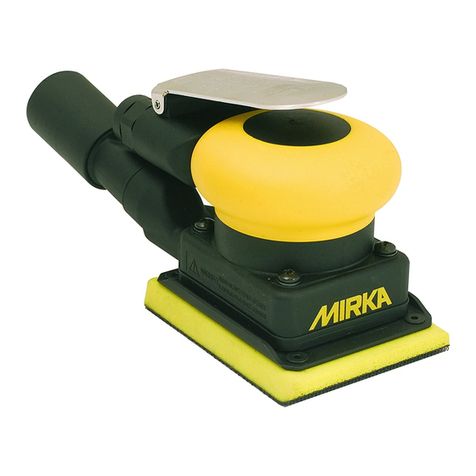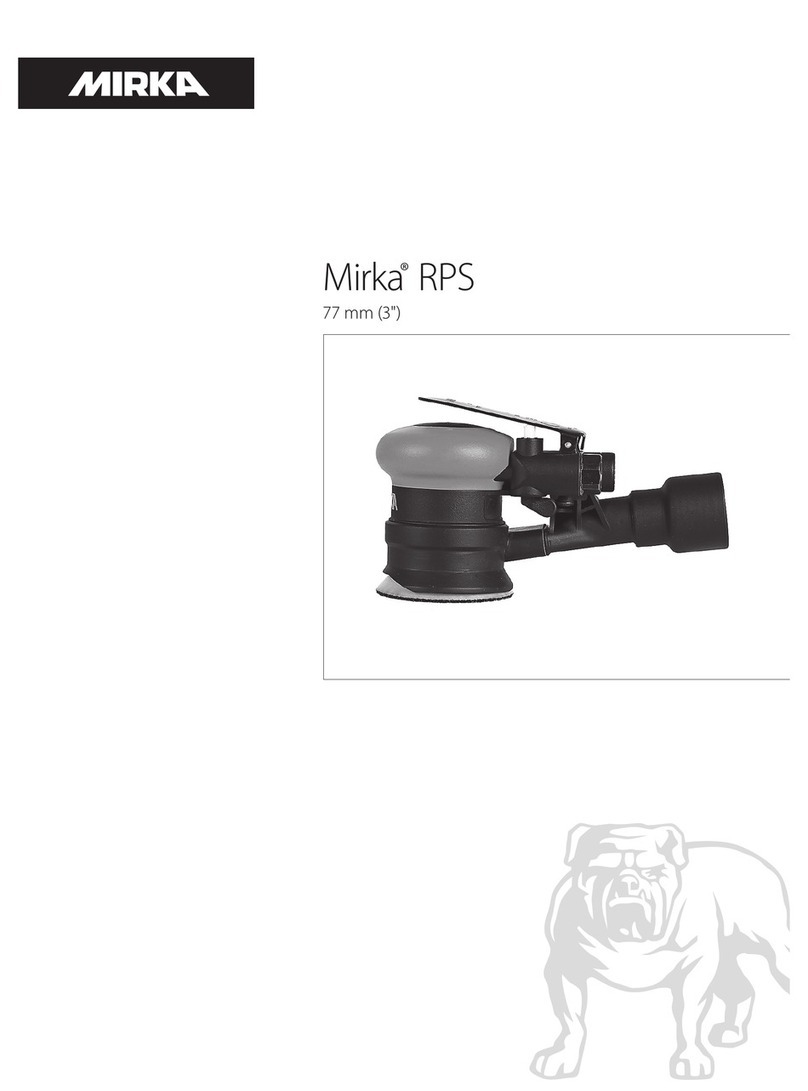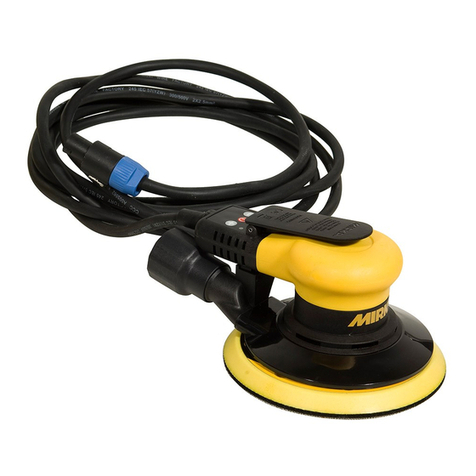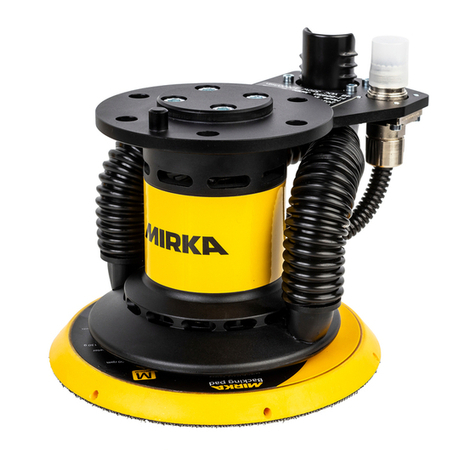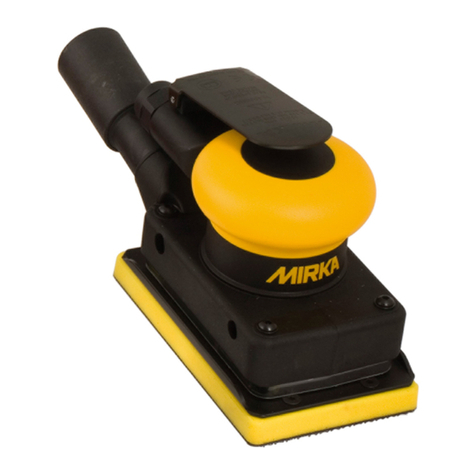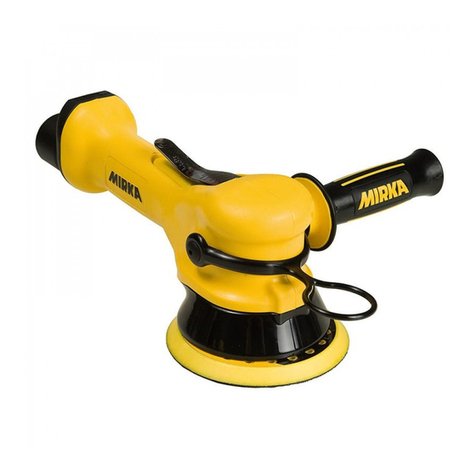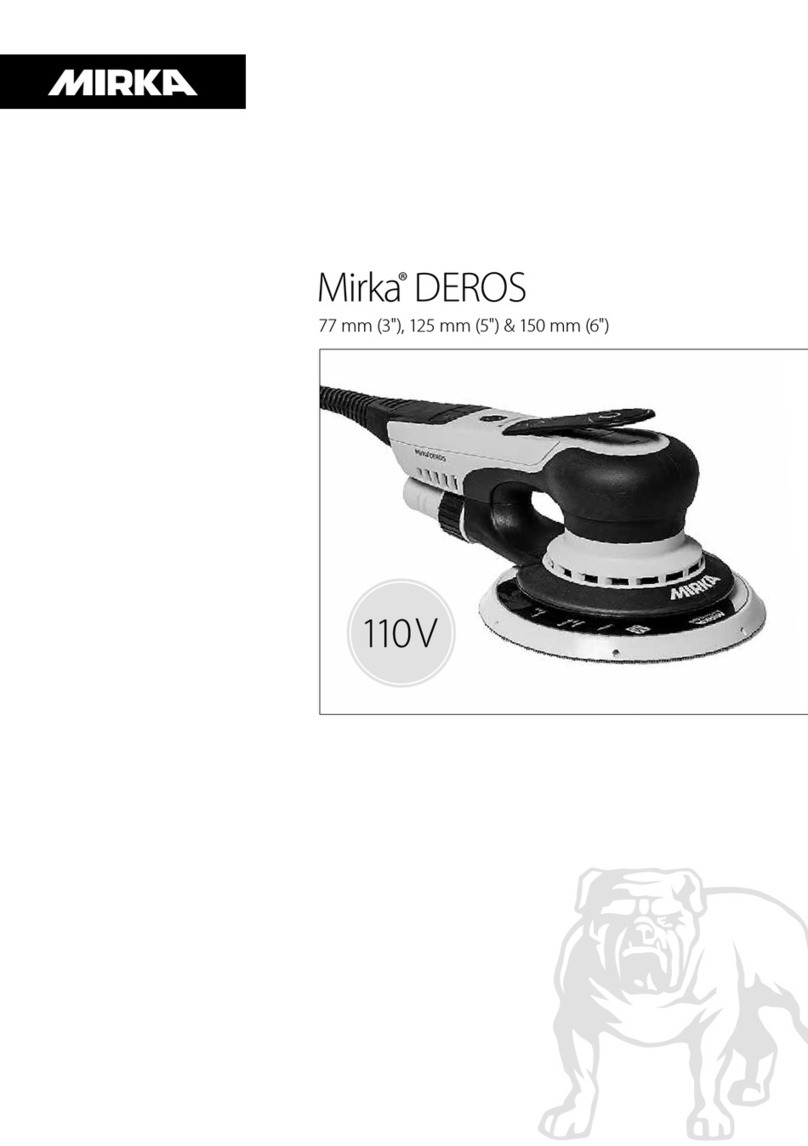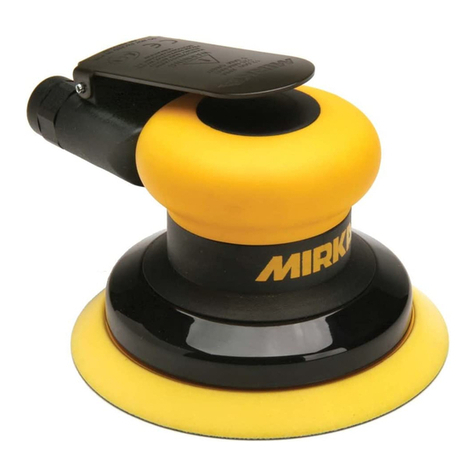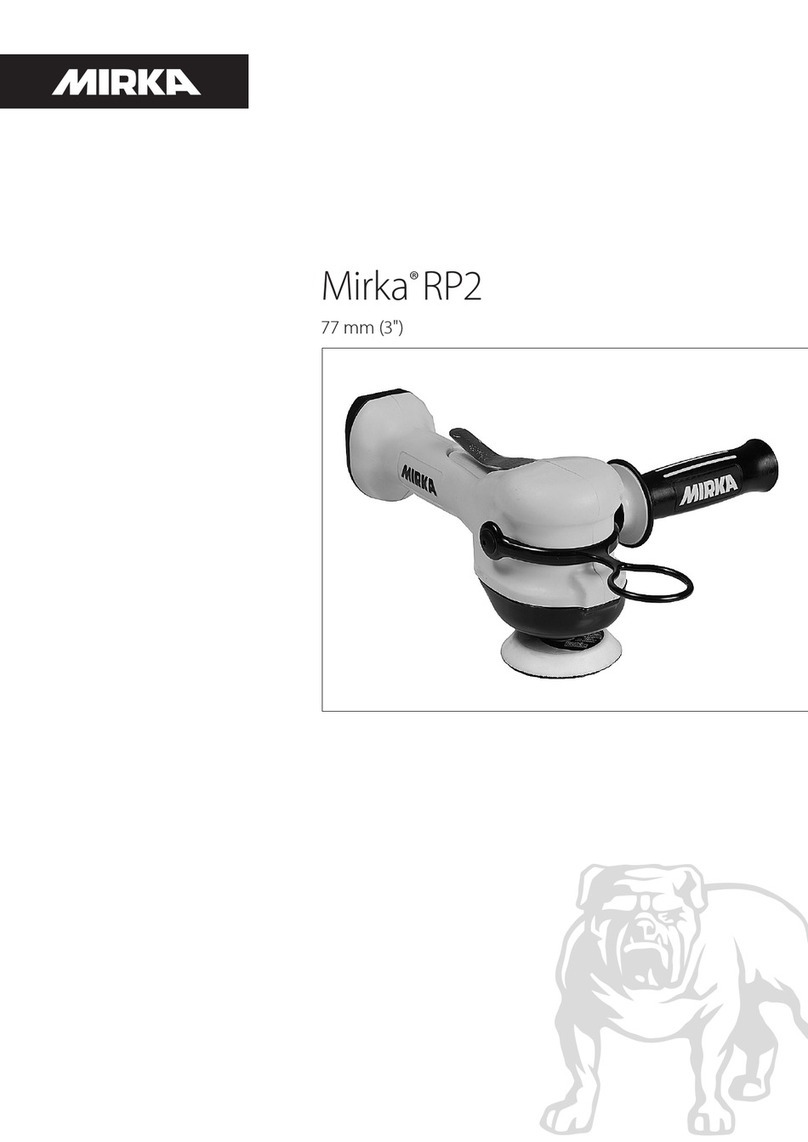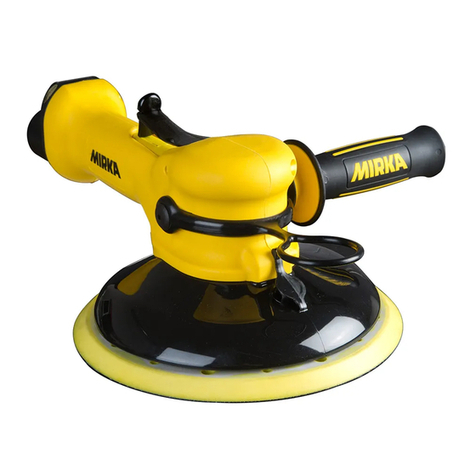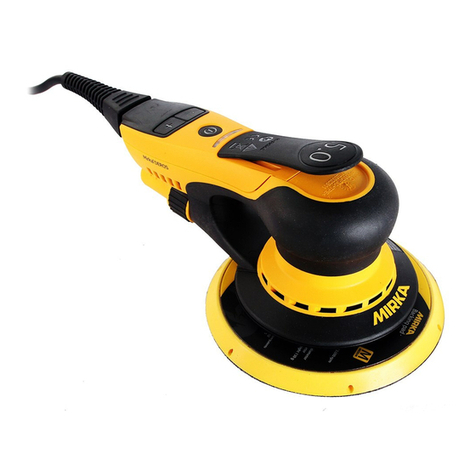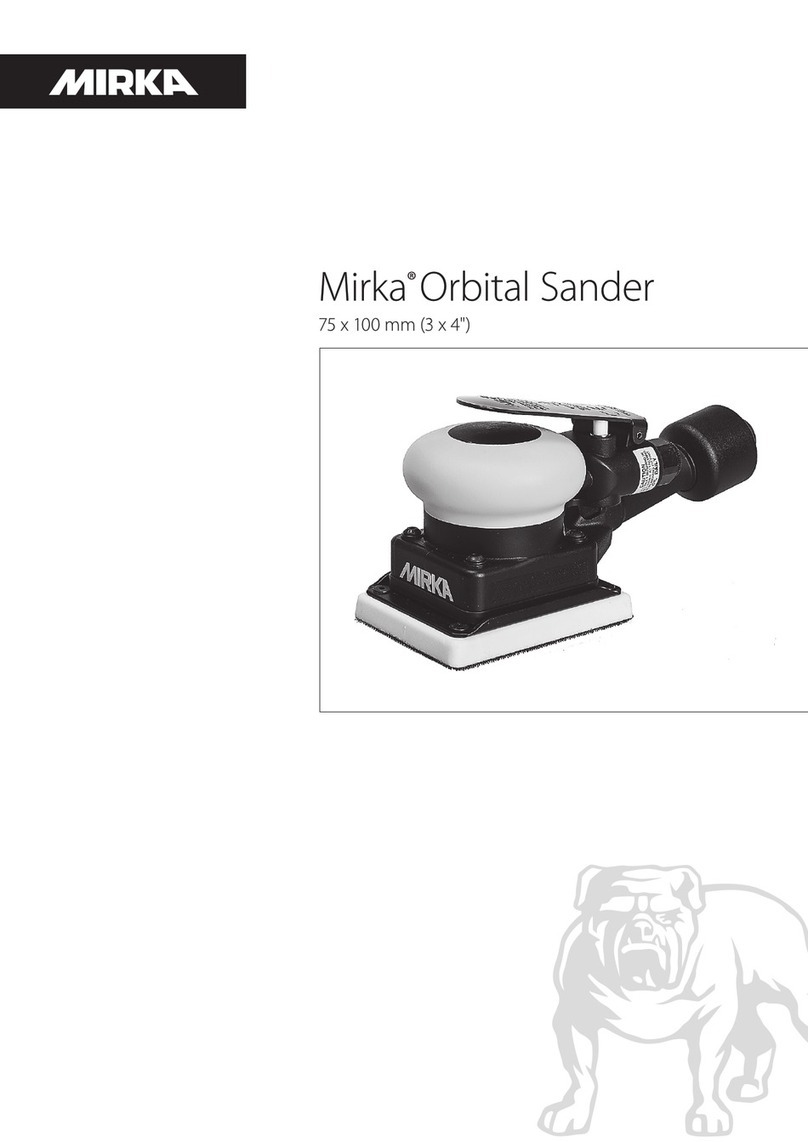
Declaration of conformity
Mirka Ltd, 66850 Jeppo, Finland
declare under our sole responsibility that the Mirka® products (listed below and see "Technical data" table for particular model) to which
this declaration relates are in conformity with the following standards or other normative documents: EN 62841-1:2015, EN 62841-2-4:2014,
EN 55014-1:2017/A11:2020, EN 55014-2:2015, EN 61000-3-2:2014, EN 61000-3-3:2013, EN 300 328 V2.2.2, EN 301 489-1 V2.1.1, EN 301 489-
17 V3.1.1, EN IEC 63000:2018 in accordance with regulations 2006/42/EC, 2011/65/EU, 2014/53/EU.
Products: Mirka®DEOS 343X, 353X, 383X & 663X
Manufacturer / Supplier
Mirka Ltd
66850 Jeppo, Finland
Tel. +358 20 760 2111
Fax +358 20 760 2290
www.mirka.comStefan Sjöberg, CEOCompany
Jeppo 26.08.2021
Place and date of issue
Original instructions. We reserve the right to make changes to this manual without prior notice.
Important
Read these safety and operating instructions carefully before installing, operating or maintaining this tool. Keep these
instructions in a safe and accessible place. Read and comply with state and local regulations.
Required personal safety equipment
Wear
face mask
Wear
safety gloves
Wear
ear protection
Wear
safety glasses
Read
operator's manual
Warning: Potential hazardous situation that may result in death or serious injury and/or property damage.
Caution: Potential hazardous situation that may result in minor or moderate injury and/or property damage.
CONFORMS TO UL STD 62841-1, 62841-2-4
CERTIFIED TO CAN/CSA STD
C22.2 No. 62841-1, C22.2 No. 62841-2-4
Please read and comply with
•General Industry Safety & Health Regulations, part 1910, OSHA 2206, available from: Superintendent of Documents;
Government Printing Office; Washington DC 20402
•State and local regulations
10 Mirka® DEOS 343X, 353X, 383X & 663X
en (original)




